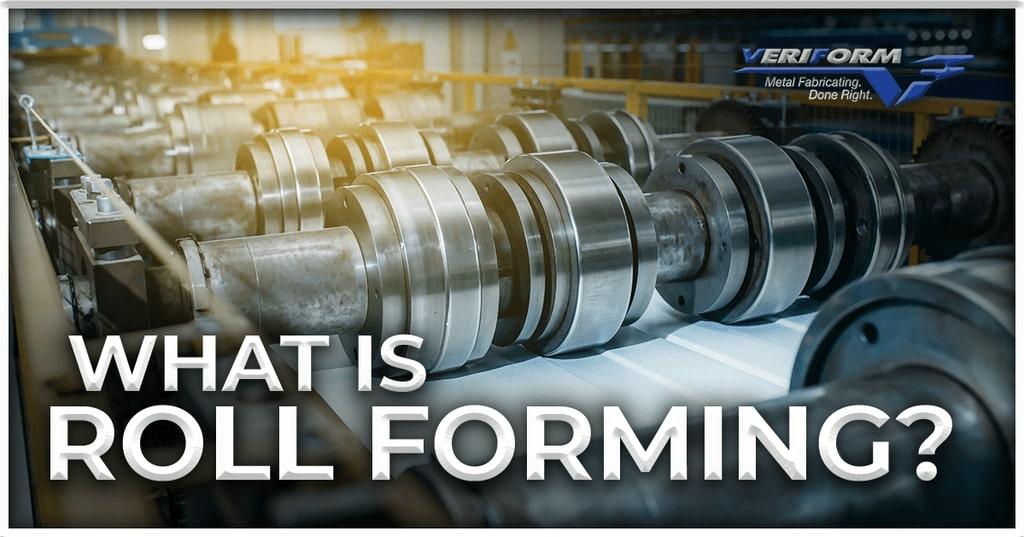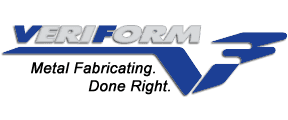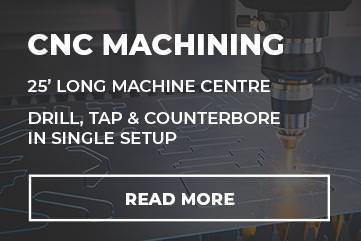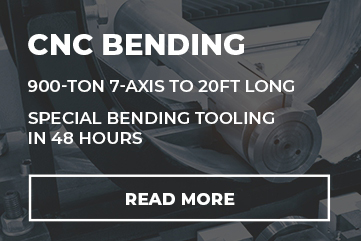News
What is Roll Forming?

Roll forming is a metalworking process that uses rollers to incrementally bend a strip of metal. In a roll forming machine, the rollers are mounted on consecutive stands. Each one completes a small step in the process, to create products like:
- Cylinders and cylinder segments
- Metal piping, stacks, and ductwork
- Both concentric and eccentric cones
As a process, roll forming has been greatly impacted by technological advancements. Computer Numerical Control (CNC) machines can be programmed to control and direct the entire process, from sequence of operations to part dimensions. The overall measurements can be continuously adjusted, allowing for non-symmetrical shapes and changes in sheet thickness.
What is the Roll Forming Process?
While the actual process can vary from one metal fabricator to the next, the basic steps for producing roll-formed steel are the same.
Roll forming starts with a large coil of sheet metal. After being uncoiled, the metal is loaded into an uncoiler and fed through a flattener to eliminate any distortion before being trimmed to allow smooth feeding into the pre-press.
Typically, a roll forming machine consists of 10 to 24 roller die stands. Metal ribbons are forced through rollers that gradually shape them to the right dimensions. During motion, parts are cut to length, which increases efficiency and speed. Cut pieces are discharged to a run-out table for shipment or further processing.
In some cases, secondary processes accompany roll forming. Many of them can be completed as soon as the part leaves the cutoff. They include:
- Notching
- Punching
- Straightening
- Adding components
- Minor assembly
What is Roll Forming Used For?
With its high quality, exacting tolerances, rapid production, dimensional accuracy, and lower cost, roll forming has become the preferred method of manufacturing metal products. Roll formed steel is often used in:
- Aircraft and automotive components
- Construction materials
- Hardware for windows and doors
- Metal and steel fencing
- Metal roofing
- House siding and rain gutters
- Metal furniture components
Advantages of Roll Forming
Below are a few of the advantages of roll forming.
- Efficiency: The self-feeding roll forming machine requires little human monitoring, which lowers labour costs. Adding punches and notches during pre-feeding avoids secondary operations.
- Cost-Effective: The smooth finish of completed parts eliminates the need for secondary processes such as deburring or trimming. By producing large quantities of parts, the final product is less expensive.
- Improved Quality: Over the course of a complete run, products are more uniform and consistent. Dimensions are extremely precise with tight tolerances. Die marks and deformities are absent, maintaining sharp, clean contours.
- Flexible Performance: Both ferrous and non-ferrous metals can be used to produce complex cross-sections. Metal that has been painted, plated, or coated cannot be shaped in some other processes.
- Less Scrap: It produces only one to three percent scrap per production run, which is far less than other metalworking processes.
VeriForm Inc.: Experts in Roll Formed Steel
At VeriForm, we have over 20 years of experience in producing rolled metal products. We roll sheet metal and structural metal using our Italian metal rolling machine, which is operated by highly trained professionals who know how to achieve superior results. With 10 foot-wide rolling capabilities, there is no request we can’t handle. To learn more about how VeriForm can meet your parts manufacturing needs, please visit our website, call 519-653-6000 or contact us online.








